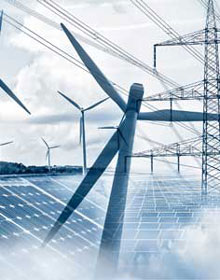
As South Africa continues to grapple with the persistent challenge of load shedding, citizens across the nation are expressing a variety of opinions and concerns about what the future holds for 2025. Load shedding, a measure employed by power utility companies to prevent the national grid from collapsing, has become a familiar disruption in the daily lives of South Africans. With 2025 on the horizon, many are hopeful for progress, yet wary of the potential for continued power cuts.
For some South Africans, the prospect of 2025 brings a sense of optimism. Recent government initiatives and investments in renewable energy have sparked hope that the country's energy crisis might soon be alleviated. The South African government has been working diligently to increase the capacity of renewable energy sources, such as solar and wind power, to supplement the national grid.
Lindiwe Nkosi, a resident of Johannesburg and an advocate for clean energy, expresses cautious optimism. "I genuinely believe that by 2025, we will see a significant improvement if the current trajectory of investment in renewables continues. It's about time we harness the power of our sunny days and windy coasts," she states. Many South Africans share Nkosi's belief that renewable energy could be the key to a more stable and sustainable energy future.
Despite the encouraging developments in renewable energy, there are widespread concerns about the state of South Africa's energy infrastructure. Many citizens worry that without significant upgrades to the existing grid, the benefits of renewable energy investments may not be fully realized.
"I am hopeful about the future, but I am also realistic," says Sipho Mthembu, an engineer based in Durban. "The infrastructure needs a complete overhaul. We can't just add new sources of energy without addressing the aging power lines and substations that are already struggling to keep up."

Mthembu's concerns echo throughout the nation, as many South Africans recognize the need for a comprehensive approach to solving the energy crisis. Without addressing the weak points in the current infrastructure, the cycle of load shedding may continue unabated.
Load shedding has not only affected individuals and households but also taken a significant toll on the South African economy. Businesses, both large and small, have suffered financial losses due to the unpredictable power cuts. As 2025 approaches, the economic ramifications of load shedding remain a hot topic.
"Load shedding has cost us dearly," says Thandiwe Dlamini, owner of a small bakery in Cape Town. "Every time the power goes out, we lose money. It's hard to plan and grow a business when you can't rely on something as basic as electricity."
The economic impact of load shedding has prompted calls for innovative solutions and increased government support for businesses affected by power interruptions. Some entrepreneurs have turned to alternative energy sources, such as generators and solar panels, to mitigate the risk. However, these solutions are not feasible for everyone, particularly small businesses with limited resources.
The younger generation of South Africans is particularly vocal about the need for change. Many young people view load shedding as a symbol of broader systemic issues and are eager for reforms that will lead to a more sustainable and equitable future.
"I want to see a South Africa where we don't have to worry about power cuts," says 22-year-old university student, Zanele Moyo. "We need to be investing in education and technology that will prepare us for a future without these challenges."
Moyo's sentiments reflect a growing awareness among South African youth of the importance of sustainable development and innovation in addressing the country's energy crisis.
As South Africa looks toward 2025, the conversation around load shedding continues to evolve. While there is hope for a brighter, more stable energy future, challenges remain in terms of infrastructure, economic impact, and the need for comprehensive policy reforms. South Africans are united in their desire for a more reliable and sustainable energy system, with the hope that the coming years will bring the changes needed to end the cycle of load shedding once and for all.


Leave a Comment